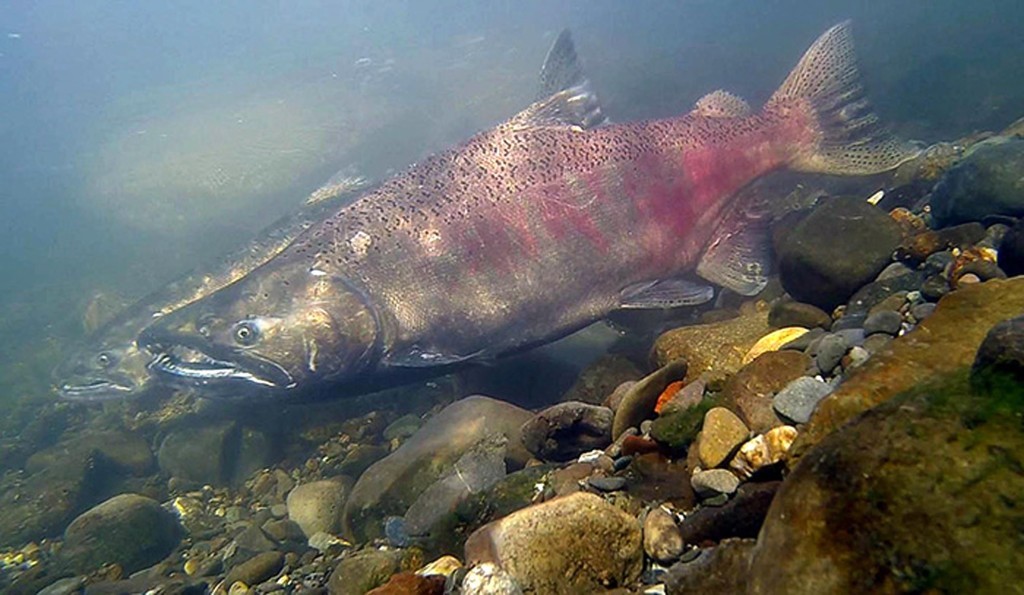
Volunteers are working hard to accurately monitor the results of the S1 program as chinooks return to reproduce. (GPFA 2013)
Do you enjoy opening the oven to a tasty salmon fillet? Or perhaps you know someone who appreciates the odd angling trip out of Campbell River? If you live in the coastal Pacific Northwest then you are likely familiar with the importance of salmon to our markets and diets. In 2005, the BC sport fishery and related businesses yielded an estimated $865 million, of the $2.2 billion that made up the province’s total earnings from seafood and other fish-related business. Chinook salmon in particular have been described as a foundation for angling throughout BC because of their large size, and are also important to commercial and aboriginal fisheries. However their importance goes far beyond human use; chinooks and other salmon are important for maintaining the health of ecosystems as spawning (releasing of eggs and sperm) runs give large amounts of food and nutrients to living things both in the sea and on land. Additionally, salmon serve as a food source for larger animals; it is estimated that chinooks compose 78% of Southern Resident killer whales’ summer diet, and 97% of their annual diet. Considering the popularity of summertime whale watching in the region, we can see that chinooks provide unexpected economic advantages.

This chinook salmon getting ready to spawn will die and provide nutrients to the entire ecosystem. (The Davis Enterprise/Ken W. Davis)
Click here to find out about the problem these fish are facing.